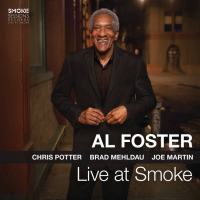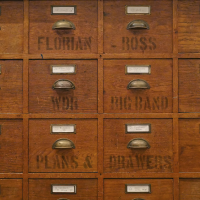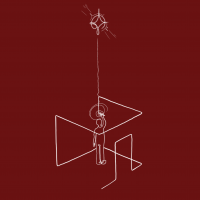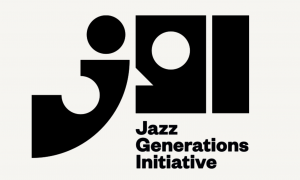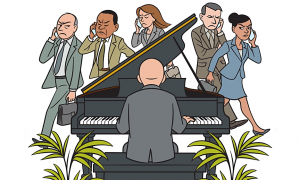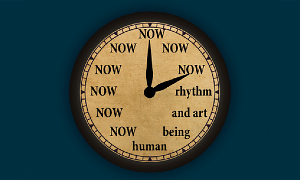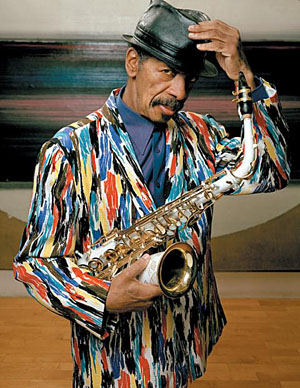
Chicago's certified jazz genius talks the deeper meaning of free jazz.
By Ken Vandermark
EDITOR'S NOTE: In 1959, a 29-year-old Ornette Coleman released his second album for Atlantic (and just his fourth in all), The Shape of Jazz to Come. The title told the simple truth: Coleman thought outside the bop and charted new territory that's still being explored in the 21st century.
One of Coleman's numerous disciples, Ken Vandermark, son of jazz critic Stu Vandermark, moved to Chicago in 1989. Quickly establishing himself as bandleader and blazing sax player, Vandermark set up a regular series of performances at the Empty Bottle. Live and on record, he led groups through Coleman numbers like “Happy House" and “Law Years." He has since continued to lead the vanguard of our city's jazz scene. In 1999, Vandermark earned a MacArthur Fellowship.
As Coleman takes a high-profile headlining slot at this year's Jazz Fest, we asked Vandermark to write about what Coleman means to him.
I first saw Ornette Coleman in Boston during the mid-1980s. It was at the world-premiere performance, by the Kronos Quartet, of one of his compositions for strings. After the group finished the piece, it announced that the composer was present and then asked him to stand. I spun around, hoping to spot him. It's impossible to describe how overwhelming it was finally to see him standing there, just two rows behind my chair, the person who had permanently changed music for me and anyone else who's heard him. He wore an immaculate, gold lam suit covered with black swans.
Ornette's work, like that of Miles Davis, has forever altered the sonic landscape; it transcends any category. During the far-reaching course of his career, Ornette has performed and composed music for world-famous duos, trios, quartets, double quartets, chamber groups, symphony orchestras and electric funk ensembles. His voice on alto, tenor, trumpet and violin is singular and uniquely human. With it, he has extended the lineage of American music from Texas blues through Charlie Parker and into the future.
There's a communal aspect to Ornette's aesthetic, a kind of democracy in action. By asking the members of his groups to try to eliminate hierarchies that can exist in more conventional music--for him and his collaborators, drums become melodic, the bass provides rhythm, a saxophone can create harmonies--Ornette has been able to craft an extremely interactive framework in which to work. As with a democratic society, this demands that the individual be responsible enough to be fully informed and inquisitive in order to completely participate in the dialogue and decision-making process that's involved.
By Ken Vandermark
EDITOR'S NOTE: In 1959, a 29-year-old Ornette Coleman released his second album for Atlantic (and just his fourth in all), The Shape of Jazz to Come. The title told the simple truth: Coleman thought outside the bop and charted new territory that's still being explored in the 21st century.
One of Coleman's numerous disciples, Ken Vandermark, son of jazz critic Stu Vandermark, moved to Chicago in 1989. Quickly establishing himself as bandleader and blazing sax player, Vandermark set up a regular series of performances at the Empty Bottle. Live and on record, he led groups through Coleman numbers like “Happy House" and “Law Years." He has since continued to lead the vanguard of our city's jazz scene. In 1999, Vandermark earned a MacArthur Fellowship.
As Coleman takes a high-profile headlining slot at this year's Jazz Fest, we asked Vandermark to write about what Coleman means to him.
I first saw Ornette Coleman in Boston during the mid-1980s. It was at the world-premiere performance, by the Kronos Quartet, of one of his compositions for strings. After the group finished the piece, it announced that the composer was present and then asked him to stand. I spun around, hoping to spot him. It's impossible to describe how overwhelming it was finally to see him standing there, just two rows behind my chair, the person who had permanently changed music for me and anyone else who's heard him. He wore an immaculate, gold lam suit covered with black swans.
Ornette's work, like that of Miles Davis, has forever altered the sonic landscape; it transcends any category. During the far-reaching course of his career, Ornette has performed and composed music for world-famous duos, trios, quartets, double quartets, chamber groups, symphony orchestras and electric funk ensembles. His voice on alto, tenor, trumpet and violin is singular and uniquely human. With it, he has extended the lineage of American music from Texas blues through Charlie Parker and into the future.
There's a communal aspect to Ornette's aesthetic, a kind of democracy in action. By asking the members of his groups to try to eliminate hierarchies that can exist in more conventional music--for him and his collaborators, drums become melodic, the bass provides rhythm, a saxophone can create harmonies--Ornette has been able to craft an extremely interactive framework in which to work. As with a democratic society, this demands that the individual be responsible enough to be fully informed and inquisitive in order to completely participate in the dialogue and decision-making process that's involved.
For more information contact All About Jazz.





